
interview conducted by Nickolas Cook
Cody Goodfellow is one of those authors whom make other authors grind their teeth in frustration. He makes it all look so easy, so simple. As if anyone with a little imagination can come up with some of the most revelatory concepts in cosmic horror since Basil Cooper, Algernon Blackwood and H.P. Lovecraft. But besides his bent for the cosmic horror, he also has a beatnik sensibility to his writings that calls forth the ghosts of the drug addled ramblings of Jack Kerouac and Ken Kesey, coupled with an almost atavistic fear of death and darkness, both personal and soul deep. This month, The Black Glove is proud to have Cody Goodfellow as our feature author.
Nickolas Cook: First off, congrats on the new family member. Do you think being a father has changed your world view or how you write your stories?
Cody Goodfellow: Thanks! This was actually my second, and I’d already hardened myself against any further emotional development long before the first.
I think having a child generally solidifies your worldview, aside from maybe making you less reckless and more worried. Having a tiny, helpless person who absorbs their entire sense of self and the outside world from you should be terrifying, but it’s all too validating for most people.
With the first, I stayed home with her most of the time while my first wife worked, so I spent endless hours alone with her, which was a weird space to be in, shortly after all the noise and stimuli of college and working at a magazine. It put a gun to my head in the sense that I had to either go out and find a sensible breadwinning career or seriously commit to writing, if I was going to support a family. But it also imposed the kind of silence and rigorous routine you really need to write seriously.
.jpg)
NC: Your collaborations with the one of the godfathers of splatterpunk, John Skipp, have become legendary (Jake's Wake (Leisure 2008) and The Day Before (Bad Moon Books 2009)). How did you guys come together as an occasional creative team?
CG: I lucked into meeting Skipp at the World Horror Convention in Phoenix in 2004, and successfully bamboozled him into reading my chapbook, In The Shadow Of Swords. Skipp was a hero of mine and as it turned out, a wonderful, weird human being, to boot. Up to that point, I’d gotten next to no reviews of any kind for my first two novels, and I just hoped somebody I respected could tell me I wasn’t wasting my life.
He went ahead and wrote a fierce editorial broadside/coming out party that ran in Cemetery Dance. At that point, if Skipp needed a kidney, I would gladly have gone down to the hospital and ripped a pair out of a doctor for him.
We remained in touch and did social stuff for a couple years before we tried writing as a duo, but we had jammed several times and recorded a couple goofy songs, so we knew we enjoyed working together. When it was suggested that we try a story collaboration, we quickly fell into the same kind of intuitive rhythm that came out of the jam sessions.
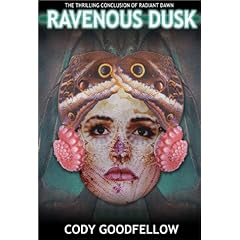
NC: How is the collaborative process different than your solo works? Is there a different engine running the two?
CG: We’re a lot like Cronenberg’s take on Kerouac and Ginsberg in Naked Lunch. My own process is almost constant, but the development of any one project is glacially slow, unless it’s on a deadline. I let ideas gestate until they’re hairy with tangents and detail and subtext, and I go through endless cycles of minute revision. Skipp is my polar opposite, and a great natural teacher.
Skipp works fast from the gut, and has a musician’s love of spontaneous accidents and a performer’s instinct for effect. We talk a lot almost every day, so my conceptual process, meshed with his, gets turned up from marinate to puree.
Having another engaged creative mind to bounce ideas off becomes what the Army calls a force multiplier; you toss any half-baked concept out, and a baker’s dozen come flying back at you.
We have very complementary tastes and compulsions in putting stories together, as well. I’m very much a plotter, while Skipp has a flair for living, lovable characters. I like layers of hyper-vivid detail, and Skipp prefers clean, succinct prose that maximizes its emotional effect. We never do anything unless we both agree on it, but rather than compromise on anything in dispute, we usually find some novel way of having it both ways.

NC: What was the first book you remember that made you sit up and realize that you could do it and probably better? The one that made you realize you had to do it?
CG: Excellent question. It’s not the ones that make you love books, but the ones that first show the brush strokes and strings, that make you realize it’s doable.
When I was eight, I complained about the reading books in my class, so my teacher gave me The Shining. I devoured it over spring break and it made me a fan of Stephen King for life. The writing was so absorbing, the images it evoked were so concrete, that it seemed as real in my memory as anything that’d ever happened to me. I didn’t see how any human being could do that.
Next, she let me read The Stand (and I’m gonna catch shit for this, but I was eight…), and a little over halfway through, I just decided I didn’t like where it was going. Everybody was dead and the plot took on its Manichean supernatural aspect, that I just lost interest. My dumb-ass eight year old self thought of a lot of other places the book could’ve gone instead, and it was that kind of naïve hubris that made me believe I could do it, too.
Another quick one, because it underscores another big thing for me: My first Lovecraft was this cheesy Scholastic collection with The Shadow Over Innsmouth and a couple other gems, padded out with some for-hire crap like Transition Of Juan Romero and In The Walls Of Eryx. Astonishing as the title stories were, capturing that sense of finding something real that I first felt with The Shining, the lesser ones showed me the same skilled hand laboring along at something contrived or uninspired, just trying to eke out a living. It’s the difference between art and work, that sense of something real or surreal that resonates with the subconscious, and comes alive, versus something simply made up to fill space and waste words. That book showed me how hard you have to work at the craft, just to be ready if and when inspiration strikes.

NC: I understand the writing process for you is pretty intense. Can you give us a rough idea of your process?
CG: I write wherever and whenever I can steal time, usually from my family and sleep. I worked at home for about ten years, so I developed a pretty rigorous self-discipline that’s carried over into my writing. But every waking hour, I’m turning things over in my head, fitting ideas together and rubbing characters against each other to see what kind of babies they make.
I never forget a story seed, but they’ll incubate for weeks, months or years before something clicks and they’re ready to write. I outline longer projects, but I carry everything around in my head until it’s all worked out. I rewrite exhaustively, but all the changes are in the language. Working with Skipp has made me more surgical in my prose, which has always been pretty dense and maximal, but when I rewrite, I usually end up adding almost as much as I take out.
NC: You've mentioned in the past that film was your first love, that you in fact went to school for it, but changed your major to literature instead. But how important is the medium to your work? What does it bring to your process and your collected work?
CG: It's funny, but the compliment “reads like a screenplay” or “this should be a movie,” these days, makes me cringe. I’ve gone from thinking that the best books should emulate movies, to believing that the best books make a movie adaptation irrelevant, if not worse.
Popular literature has subordinated itself in so many unfortunate ways to cinema… few popular mainstream books, especially thrillers, seek to deliver more content than a hundred minute feature film, and there’s still a tendency for horror writers to use hackneyed allusions to movies to sell their scenes: “everything seemed to go into slow motion, just like in a horror film,” etc. Maybe because films are the only context most writers and readers have in which to place scenes of violence and magic, but it abdicates a lot of what the written word can do, that no other medium can.
I’ve written as much in sheer pages for scripts as I have for stories and novels, and none of it has gotten produced. It’s all too much like the space program, with so much money and so many people, between you and the final image. Screenwriting is great exercise, though… it flays away everything but dialogue and bare, yet vivid directions, so it forces you to see exactly what you need to tell the story, and what’s just frippery.
The few times I’ve been lucky enough to work in comics, I’ve been able to get that jolt of pure joy from seeing my work realized in visual media, and while it’s not all singing and dancing, it’s a lot easier to get one artist to draw a comic, than to get anyone in Hollywood to read a script, let alone consider making it.
The dream of film does still exert a powerful gravity on my process, because film is essentially just a bunch of tactics for transmitting an artificial dream. In the dark, in a passive, hypnogogic state, you leave your life and enter someone else’s. So, rather than trying to make a diminished knockoff of a film experience, I try to go back to the original thing being imitated. Even something as simple as the written word has its own tools for putting the reader under a spell and shoving them into that dream, and not just putting them in front of it.
I have to see and, if possible, feel, the whole of the story before I can begin to write it. And it has to keep me intrigued, so a screenplay’s impatience for meandering is a healthy tonic for bloated fiction. But the end effect of my work is definitely to pack not just a brain-movie, but a full-sensory fever dream, into those words, that infects the reader’s head. To have as much control over the clarity and content of those images, without getting in the way of them, is the ultimate goal I’ve been chasing all my life.
But more and more, I’m drawn to find the kind of stories that couldn’t be filmed, that play on the unique properties of written storytelling.
NC: What movies do you think should be required viewing?
CG: The usual film school bullshit: M, A Clockwork Orange, Apocalypse Now, Videodrome, Humanoids From The Deep. About half my favorite movies all came out in the summer of ‘82––Blade Runner, The Thing, The Road Warrior. And the ultimate writer’s horror film, Barton Fink.
NC: Lovecraft is undoubtedly a huge influence on your first two books (Radiant Dawn (Perilous Press 2000) and Ravenous Dusk (Perilous Press 2003)). What are some of the other authors who have helped you become the craftsman you are today?
CG: I’ve always read at least as much science fiction as horror. My prose style probably owes more to cyberpunks Gibson and Sterling than to anyone in horror. In them, I saw a style that was very dense with ideas and yet it felt clean and lean, and idea and action interwoven to sow little bombs of questions that only bubble up long after the story’s done.
I love ideas that are intrinsically shocking and dangerous, and I try to do with my horror stories what Philip K. Dick, Harlan Ellison and J.G. Ballard did with science fiction. There are a few guys doing that with horror, Schow, Barker and John Shirley being my favorites.
But looking at the kinds of modern horror stories I write most often, it seems like Skipp’s short story “Gentlemen” was really a skeleton key that opened up a world of hidden stories, of extracting an almost cosmic horror from commonplace aspects of the world we take for granted.
NC: I've heard some musical collaborations between you and Skipp. Any chance of music becoming another outlet for you in the future? Any album releases for which we should be on the outlook?
CG: Writing and family take up so much of my time, I seldom get to do more than poke at sketches for songs, but I know I’ll go back to making music when I next get burned out on writing. I program electronic music almost the same way I write, but accidents and intuitive choices cause the project to mutate so much faster than a big raft of paragraphs, and the process itself is so much more mysterious.
I scored a couple of pornos in college and used to play small club shows in San Diego, but it’ll always be a hobby for me. Eventually, Skipp and I will probably do some more jams, and post them on mySpace or something.
(Some old, dreadful techno I made a long time ago is still up on myspace under the band name Honky Propulsion Systems.)
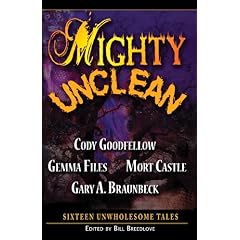
NC: What advice do you have for young wannabe writers of dark fiction? Anything you feel is imperative to the act of becoming a successful writer?
CG: I think ambition is great, but I lost a lot of sleep gunning for this to be a career, that I wish I could get back. There are so many better ways to make a living, that you have to be mad for it.
I know a handful of very driven, excellent writers who make a living at this business, but I’ve seen that the kind of books I want to write, the way I want to write them, is probably never going to put my kids through college. Working with Skipp has allowed me to have it both ways and do more accessible, transparent works, but writing is such a gamble. You’ve got to be thoughtful in reaching and keeping the reader, but if you’re not obsessed with what you’re writing, if you’re only doing it because you want to be a writer or to emulate the books you love, it’ll show, and it won’t sell.
I see so many writers rushing out to build a career before their work is ready. Seek honest, brutal criticism wherever you can find it, and learn to ruthlessly assess your own work before you let it out into print. POD and Internet zines and message boards offer the chance to live the fantasy writer’s life. If you’re serious about your writing, log off and write. Then rewrite, and submit. Let people discover you as a writer through your writing, rather than through saucy flame wars with trolls.
NC: If you could write your own eulogy, what would it say? What do you want people to say about your collected work?
CG: “He really believed this was a recurring nightmare, and none of you were real. Oops…”
I would hope that the sum experience of reading my work would make people see their world with new eyes. But I expect this’ll just mean idiots in the future take it literally, and eat my books, hoping to get high.
--Nickolas Cook
(The Black Glove thanks Cody Goodfellow for his time and efforts. Visit Cody
here for more news and happenings A complete bibliography of his works can be found
here)











.jpg)






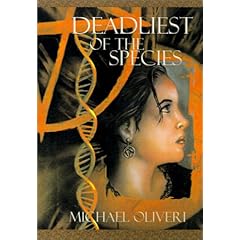
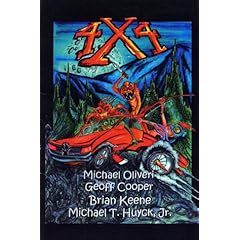














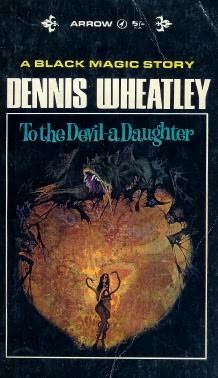





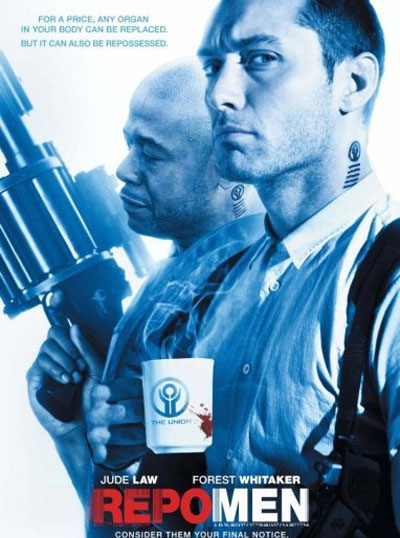
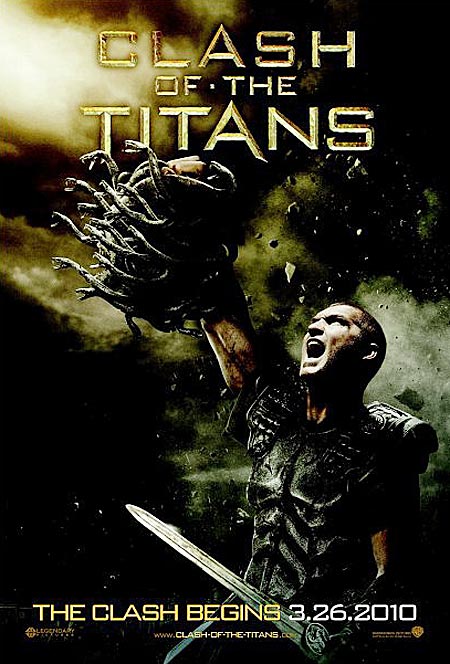

+-+Mediafire+Links+%5B300mb%5D.jpg)
